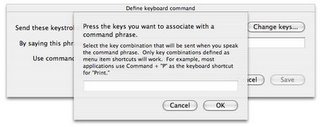The IVR Cheat Sheet
Today's Wall Street Journal had a brief article about Paul English's IVR Cheat Sheet. The IVR Cheat Sheet is a list of phone numbers and tips on how to bypass the IVR applications of numerous well known companies and speak with a human call attendent.
There is some interesting usability data in this list. For example, according to the data being reported in the industry rags, the use of speech recognition greatly increases the odds of not needing to get a human call agent involved in the call when compared to traditional IVR apps using DTMF. Out of the 111 companies in the list, the tips associated with 17 of them involve speech recognition.
The list also could serve as a case study in a human factors text book. Here are some of the more interesting (and entertaining) antipatterns. These examples range from navigating poorly designed call flows, to applying some rather clever social engineering.
Ikea 800 434-IKEA "0000000 (hit ""0"" many times fast, if you do it once, or too slow, it will merely repeat the menu)"
Sears 800-4-MY-HOME Silence don't push numbers just sit there and you will be placed at front of queue.
USPS 800-275-8777 7-3-2 or send them some junk mail
SBC 800-585-7928 Again, an (intelligent, this time) IVR wants YOUR phone number first.
Verizon DSL 800 567 6789 "Say ""I don't know it"" then ""technician"""
Cingular 800-331-0500 For faster service, the option that you are looking to close your account, You get the same ppl but an immediate answer
As consumers become more savvy with regard to this sort of information (I've come across this list several times in the past few months, prior to reading about it in the Journal this morning) another interesting exercise would be to identify which applications do not make it to this list and others similar to it? Presumably, such applications are so easy to use that callers accomplish what they set out to do with no need to talk to a live call attendent. For example, how many of the apps appearing in this list are TellMe clients? I have a hunch, the answer is very few.





